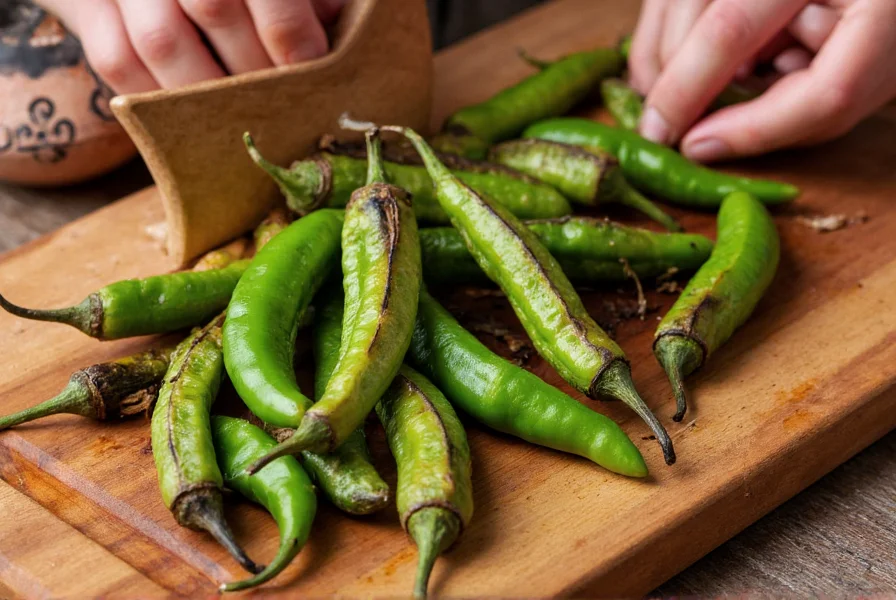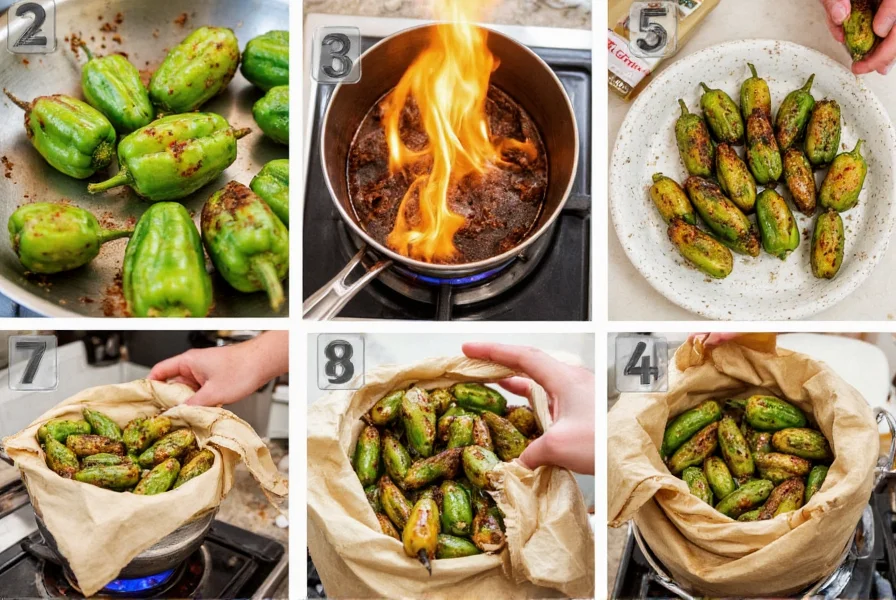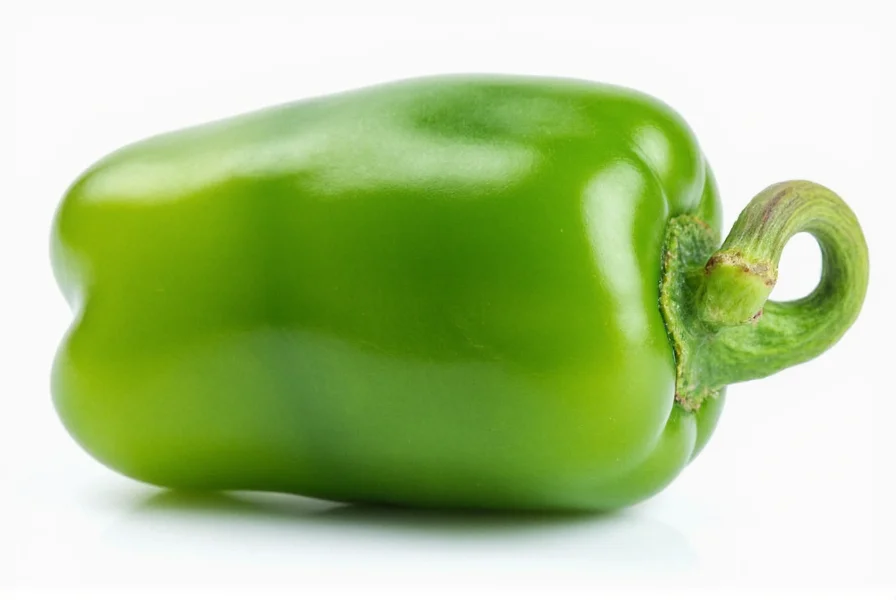Hatch green chile peppers represent more than just a spicy ingredient—they're a cultural icon of New Mexico's culinary heritage. Grown exclusively in the fertile floodplain of the Rio Grande in the Hatch Valley region, these peppers benefit from a perfect confluence of high altitude, abundant sunshine, and mineral-rich soil that creates their signature flavor profile. The term 'Hatch' isn't merely descriptive; it's a protected designation indicating peppers grown within a 200-mile radius of the town of Hatch, New Mexico.
The Hatch Valley: Where Flavor Meets Terroir
The unique microclimate of New Mexico's Hatch Valley—situated between the towns of Arrey and Mesilla—creates ideal conditions for growing exceptional green chiles. The valley's combination of 300+ days of annual sunshine, significant temperature swings between day and night, and nutrient-dense alluvial soil produces peppers with complex flavor notes you won't find in generic green chiles grown elsewhere. Local farmers have cultivated specific varieties like 'Blossom,' 'No. 9,' and 'Joe E. Parker' for generations, each offering slightly different heat levels and flavor characteristics while maintaining that distinctive Hatch profile.
Understanding Hatch Green Chile Varieties and Heat Levels
Hatch green chiles come in three primary heat varieties, each suited to different culinary applications:
| Variety | Scoville Units | Flavor Profile | Best Uses |
|---|---|---|---|
| Mild | 2,500-4,000 | Sweet, grassy, vegetal | Stews, sauces, family-friendly dishes |
| Medium | 4,000-6,000 | Peppery with citrus notes | Enchiladas, burgers, roasted applications |
| Hot | 6,000-8,000 | Sharp, smoky, complex heat | Salsas, specialty dishes for heat lovers |
Unlike jalapeños or serranos, Hatch green chiles offer a more nuanced heat that builds gradually rather than hitting you immediately. Their thick walls make them ideal for roasting, which transforms their flavor profile dramatically—developing caramelized notes while maintaining their essential vegetal character. This roasting process is so integral to Hatch chile preparation that many New Mexicans consider unroasted Hatch chiles incomplete.

Seasonality: Why Fresh Hatch Chiles Are a Limited-Time Treasure
The authentic Hatch green chile experience is inherently seasonal. The harvest window runs from late July through September, with peak availability in August and early September. This limited season exists because Hatch chiles require specific temperature conditions—warm (but not hot) days and cool nights—that only occur during this period in the Hatch Valley. Attempting to grow them outside this window or in different climates produces peppers that lack the distinctive flavor compounds developed under Hatch's unique growing conditions.
During harvest season, you'll find fresh Hatch chiles at farmers' markets throughout the Southwest and increasingly in specialty grocery stores nationwide. Many consumers take advantage of the season to roast and freeze large quantities for year-round use. Properly frozen Hatch chiles maintain excellent flavor for 6-12 months, making them accessible beyond their short fresh season.
Traditional Roasting Techniques for Maximum Flavor
Roasting transforms Hatch green chiles from simple vegetables into complex flavor enhancers. The traditional method involves these steps:
- Score the chiles lengthwise to allow steam to escape
- Char over open flame (gas stove, grill, or broiler) until skin blisters
- Place in paper bag for 10-15 minutes to steam and loosen skin
- Peel away blackened skin while preserving as much green flesh as possible
- Remove seeds for milder flavor or retain for extra heat
- Store immediately or freeze for later use
Modern alternatives include using a cast-iron skillet or dedicated chile roaster, but the traditional open-flame method creates the most complex flavor profile through controlled charring. The roasting process breaks down certain compounds while creating new flavor molecules through the Maillard reaction, resulting in that distinctive smoky-sweet Hatch chile essence.

Culinary Applications: Beyond the Basic Chile Relleno
While chile rellenos showcase Hatch green chiles beautifully, their versatility extends to countless applications:
- Breakfast: Fold roasted chiles into scrambled eggs or omelets
- Sauces: Puree with tomatillos for a vibrant green enchilada sauce
- Burgers: Mix finely diced chiles into ground beef patties
- Casseroles: Layer in potato or chicken casseroles for Southwestern flair
- Cocktails: Infuse into simple syrup for spicy margaritas
One classic New Mexican preparation is chile con queso—a simple dip made by combining roasted Hatch chiles with melted cheese (traditionally queso fresco or Monterey Jack). The peppers' natural acidity balances the richness of the cheese, creating a dish that's greater than the sum of its parts.
Common Misconceptions About Hatch Green Chiles
Several myths persist about these celebrated peppers:
- Myth: All green chiles labeled 'Hatch' are actually from Hatch Valley
Reality: Only peppers grown in the designated New Mexico region can legally be called Hatch. Many retailers misuse the term for marketing. - Myth: Hatch chiles are always extremely hot
Reality: Mild varieties are most common and suitable for everyday use. Heat levels vary significantly by specific cultivar. - Myth: Frozen Hatch chiles are inferior to fresh
Reality: Properly roasted and frozen Hatch chiles maintain excellent flavor for months, making them a practical alternative outside harvest season.
Preserving the Harvest: Storage Techniques
To enjoy Hatch green chiles year-round, proper storage is essential:
- Refrigeration: Store fresh, unroasted chiles in a paper bag in the crisper drawer for up to 2 weeks
- Freezing: Roast, peel, and freeze in airtight containers for 6-12 months (flash-freeze pieces first to prevent clumping)
- Canning: Pressure-can roasted chiles for shelf-stable preservation (requires proper food safety procedures)
- Drying: String and air-dry whole chiles for ristras, or dry and grind into chile powder
For best results when freezing, portion chiles into recipe-sized amounts before freezing. This prevents repeated thawing and refreezing, which degrades quality. Many New Mexican families have perfected their own preservation techniques passed down through generations.
When is Hatch green chile pepper season?
Hatch green chile season runs from late July through September, with peak availability in August. This limited window corresponds to the specific temperature conditions in New Mexico's Hatch Valley that create the peppers' distinctive flavor profile.
How hot are Hatch green chile peppers compared to jalapeños?
Hatch green chiles range from 2,500-8,000 Scoville units depending on variety, while jalapeños typically range from 2,500-8,000 Scoville units. The key difference is in flavor profile—Hatch chiles offer a more complex, grassy flavor with gradual heat, whereas jalapeños deliver sharper, more immediate heat with less nuanced flavor.
What's the best way to store fresh Hatch green chiles?
Store fresh, unroasted Hatch green chiles in a paper bag in your refrigerator's crisper drawer for up to two weeks. For longer storage, roast, peel, and freeze them in airtight containers for 6-12 months. Flash-freeze portions on a baking sheet before transferring to containers to prevent clumping.
How can I tell if green chiles are authentic Hatch varieties?
Authentic Hatch green chiles will be labeled with their specific heat level (mild, medium, or hot) and should indicate they're grown in New Mexico's Hatch Valley region. During peak season (August-September), many retailers receive shipments directly from Hatch. Be wary of 'Hatch-style' claims outside this season, as true fresh Hatch chiles aren't available year-round.
Why do Hatch green chiles need to be roasted?
Roasting Hatch green chiles transforms their flavor profile through the Maillard reaction, developing complex caramelized notes while reducing raw vegetal bitterness. The process also loosens the tough outer skin, which many find unpleasant to eat. Roasting enhances their natural sweetness and creates the characteristic smoky flavor associated with traditional New Mexican cuisine.











 浙公网安备
33010002000092号
浙公网安备
33010002000092号 浙B2-20120091-4
浙B2-20120091-4